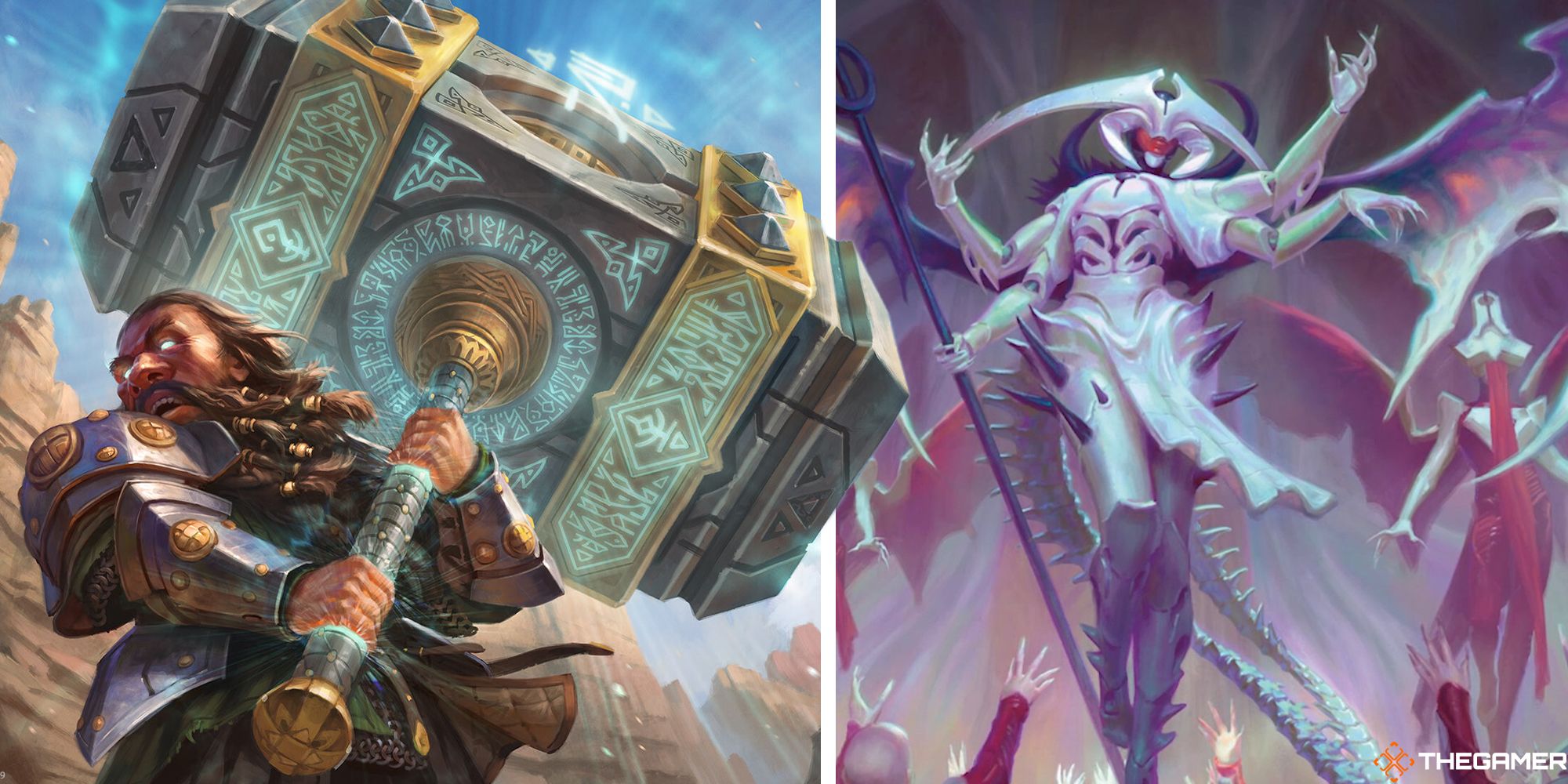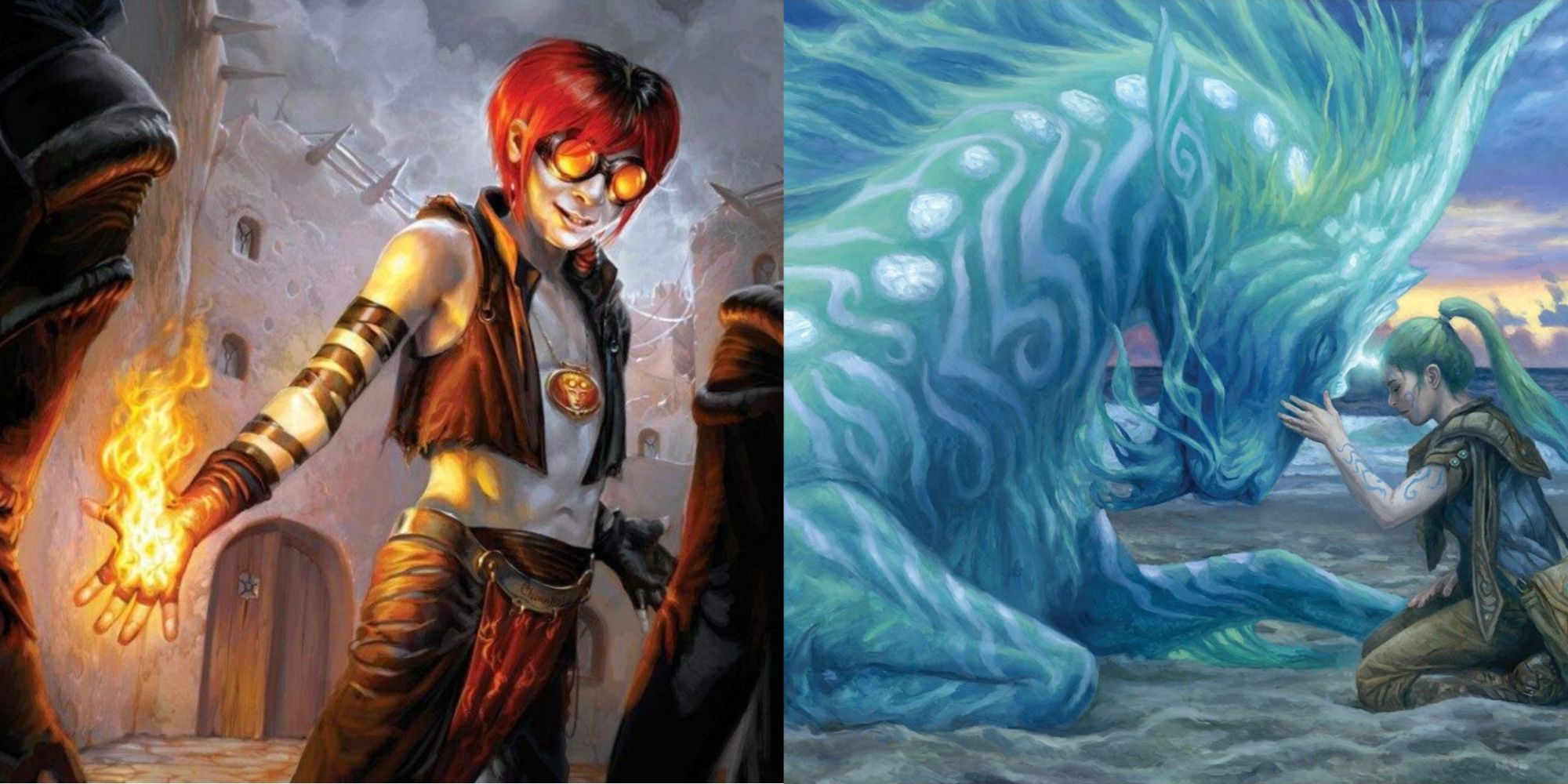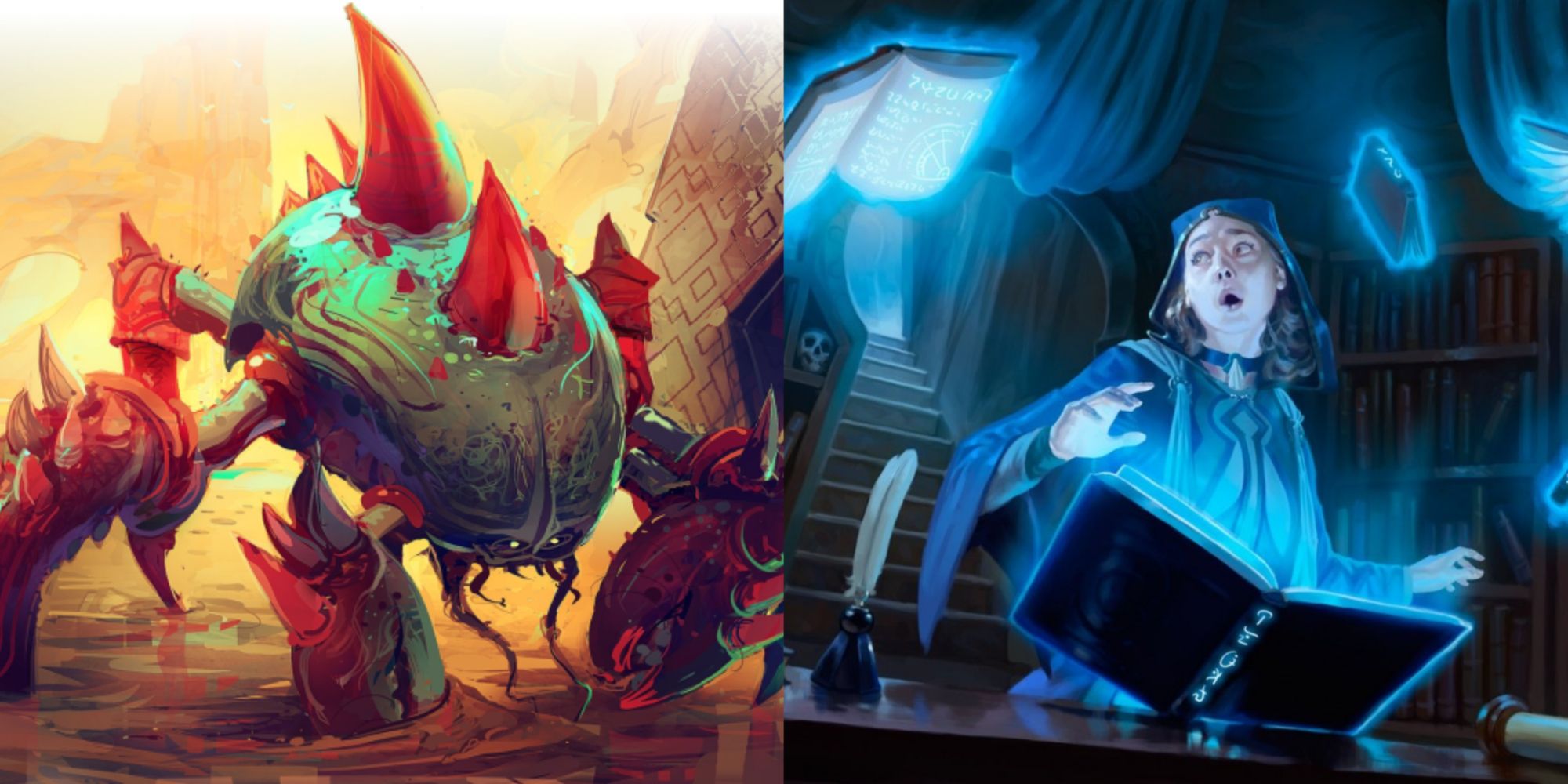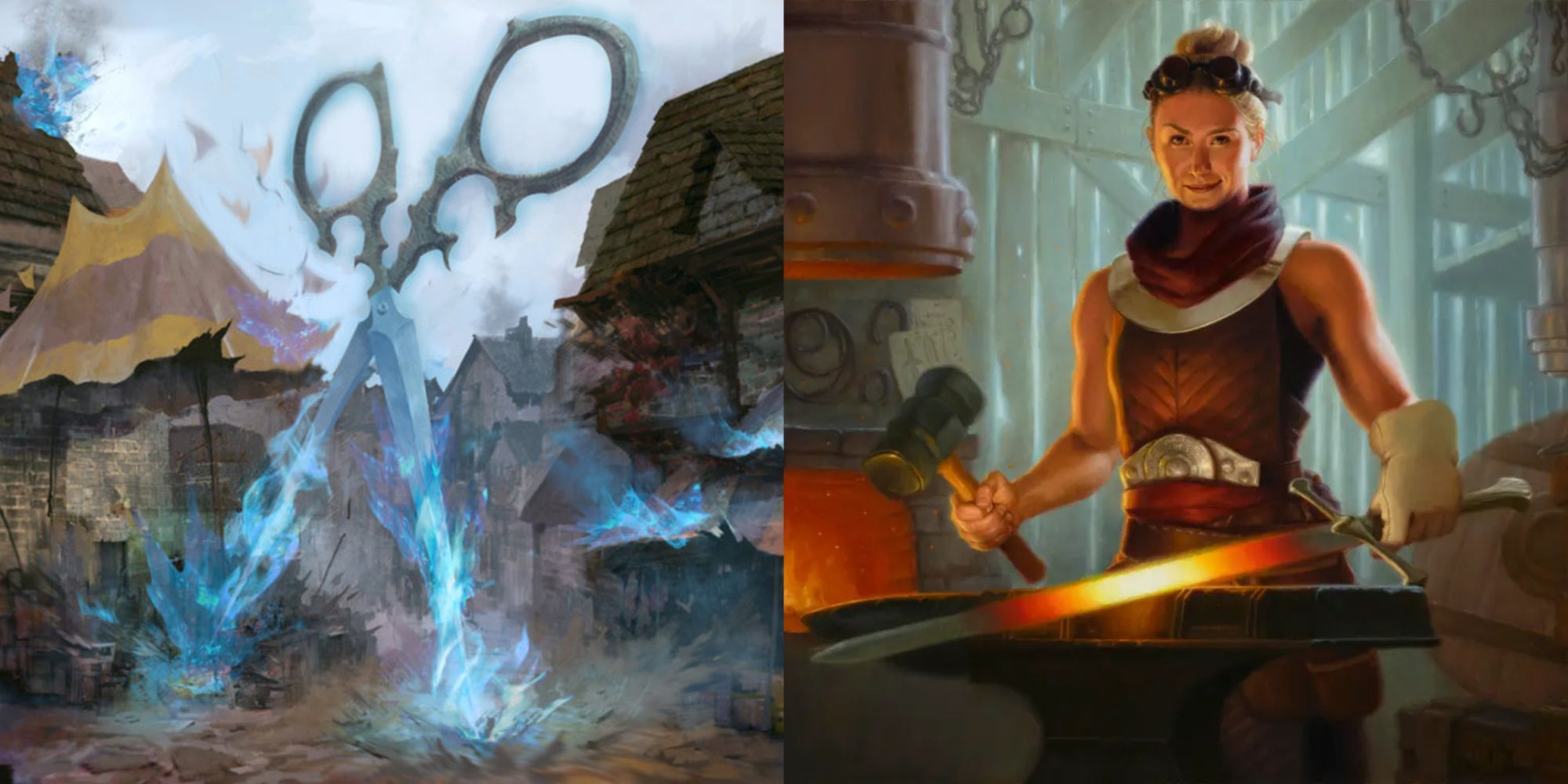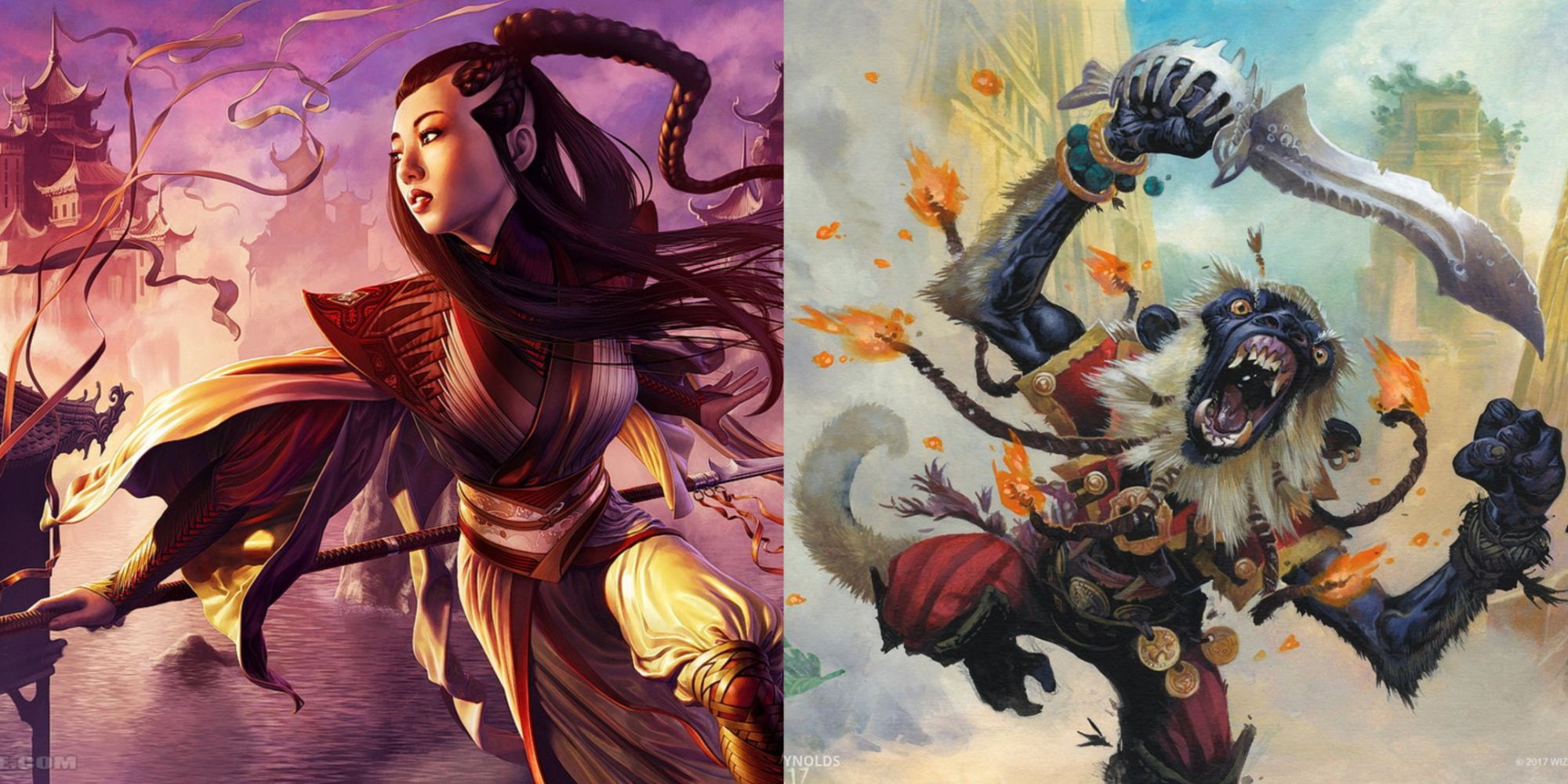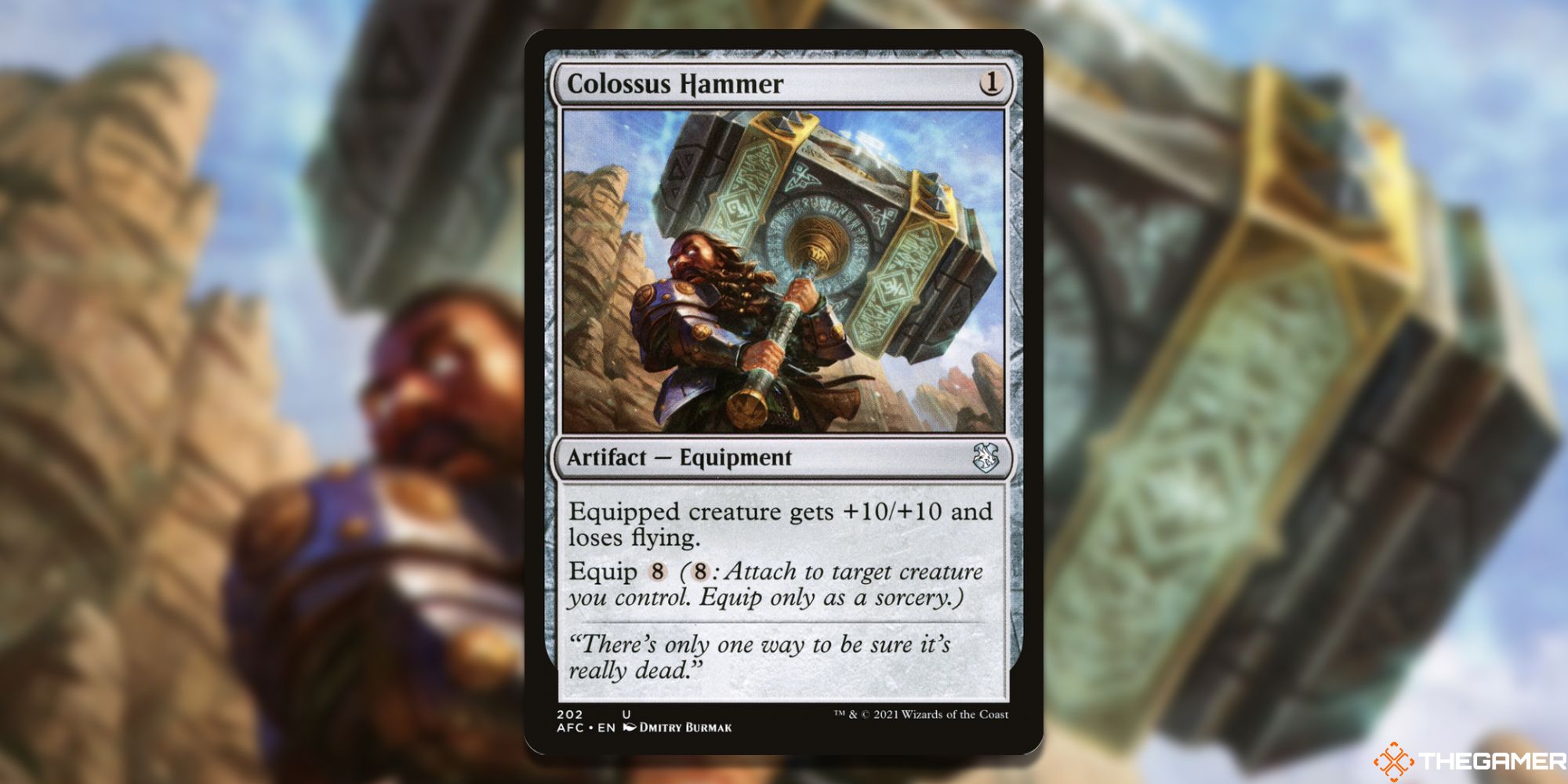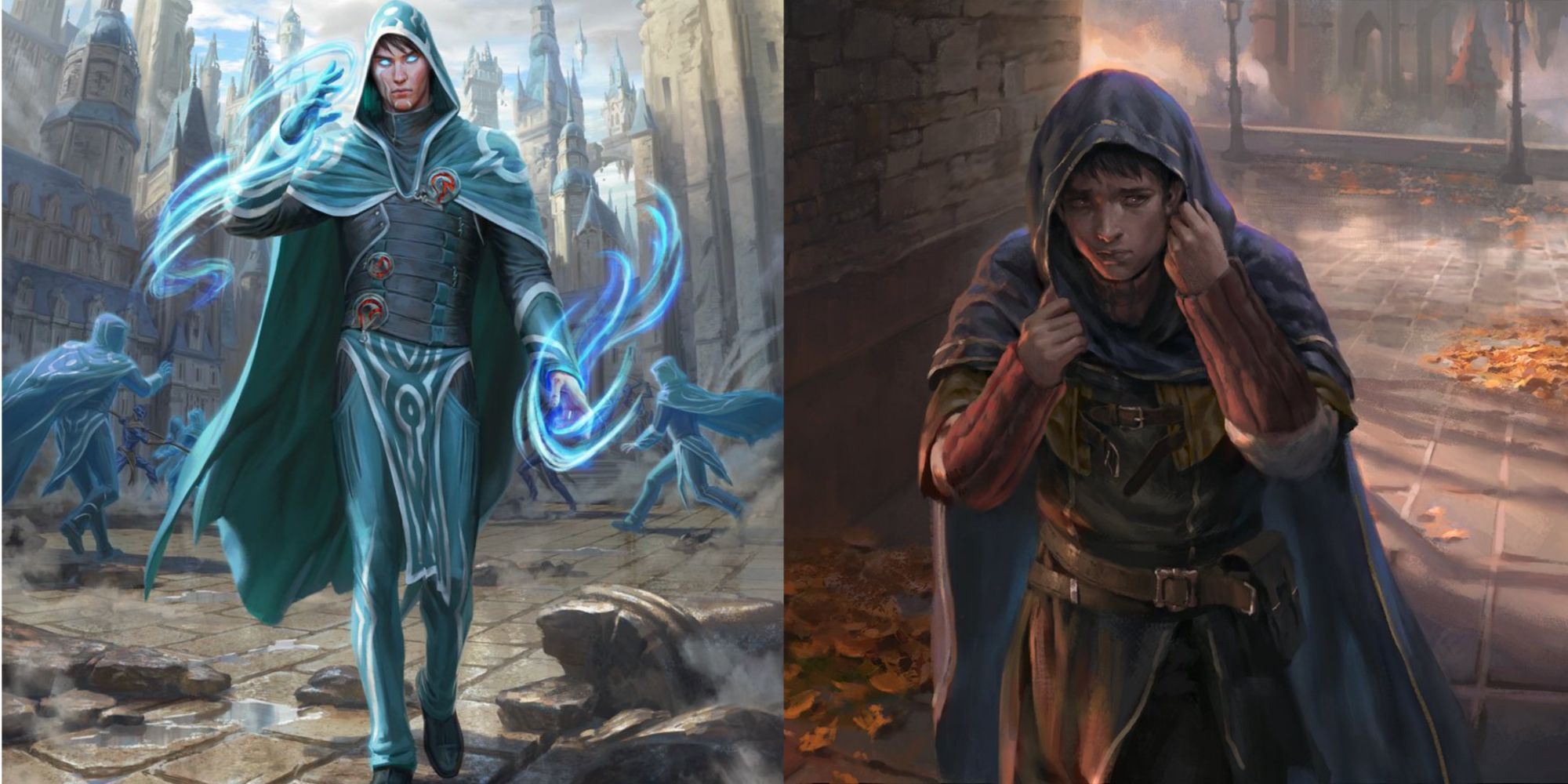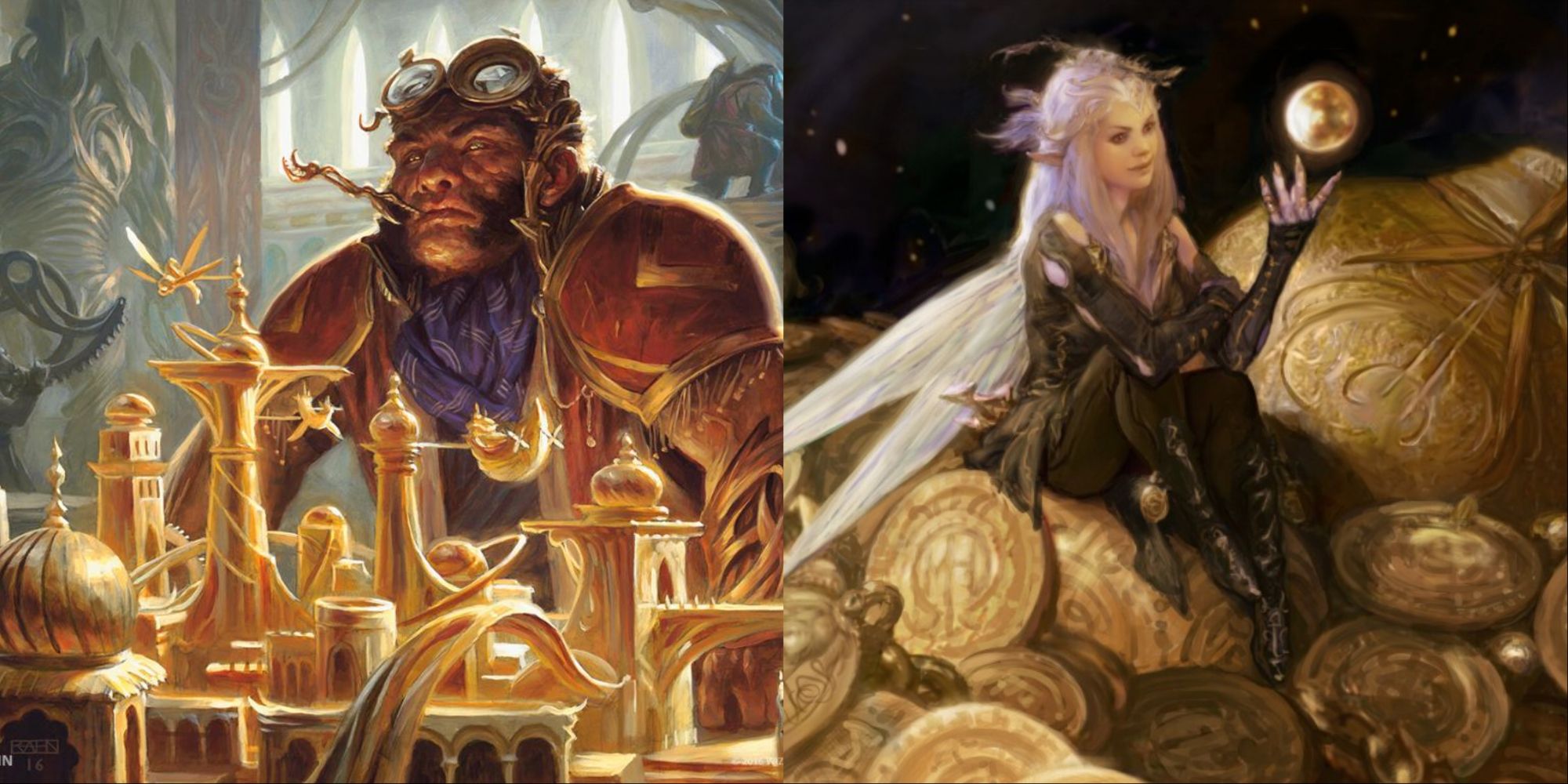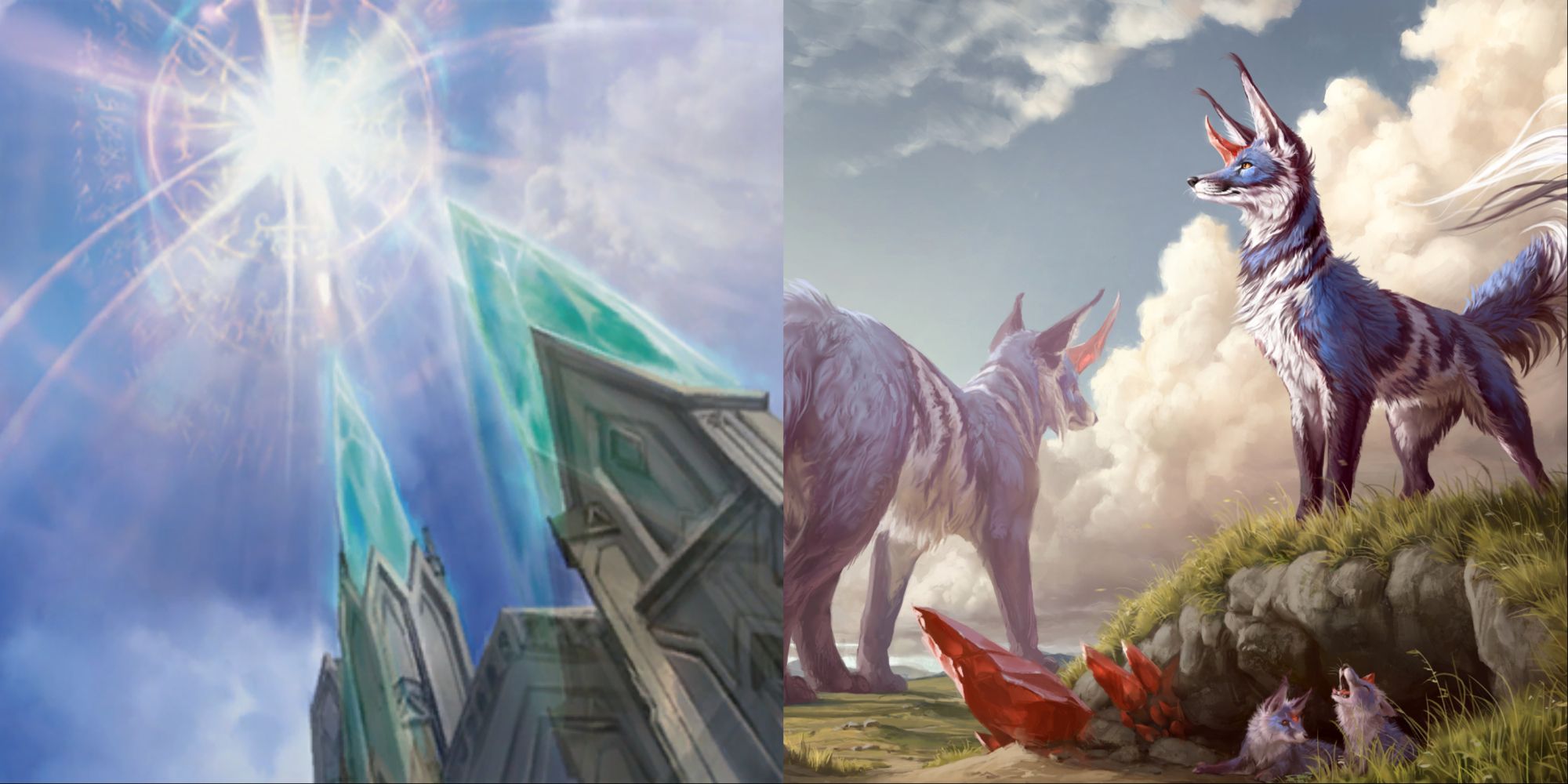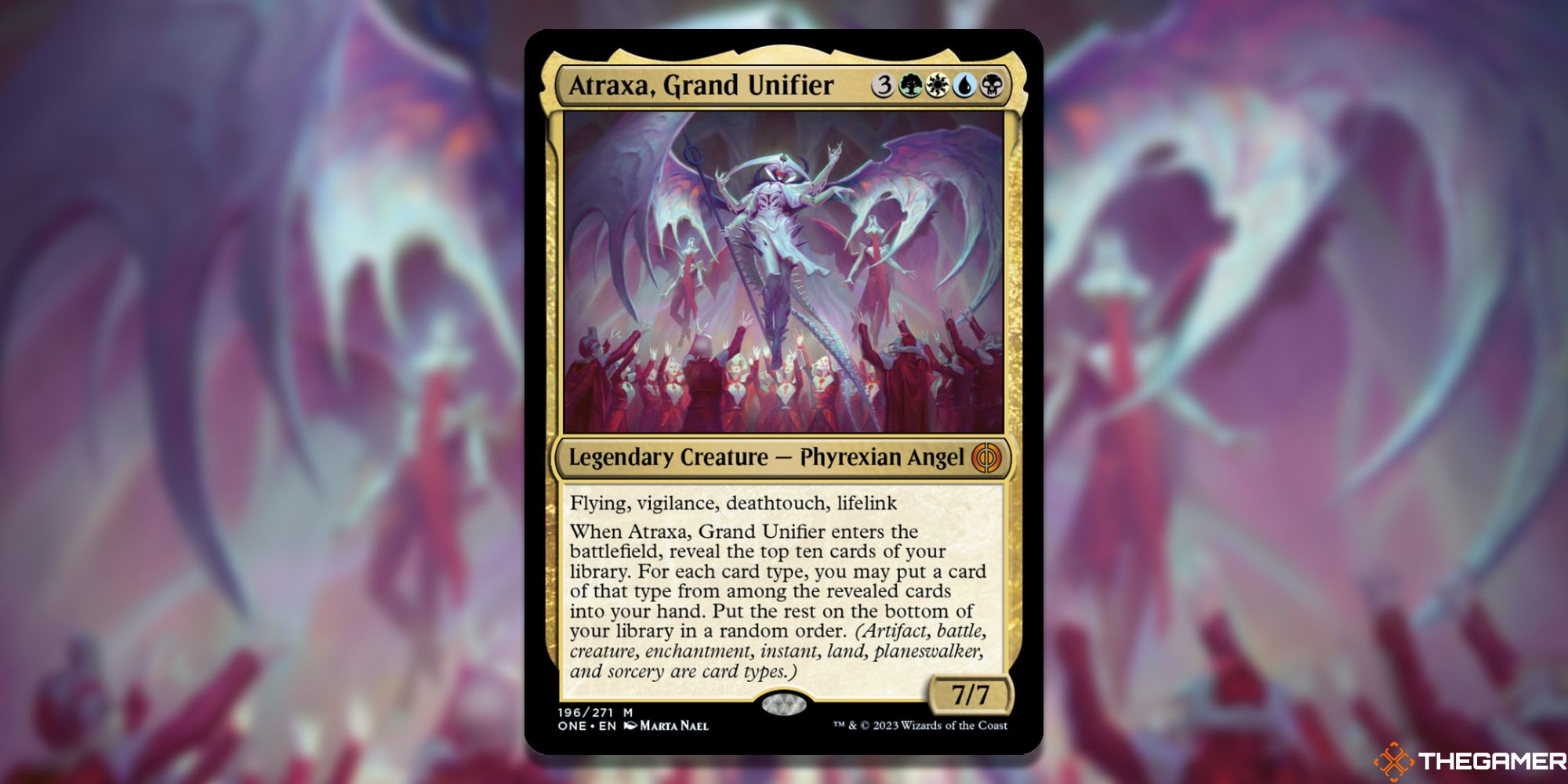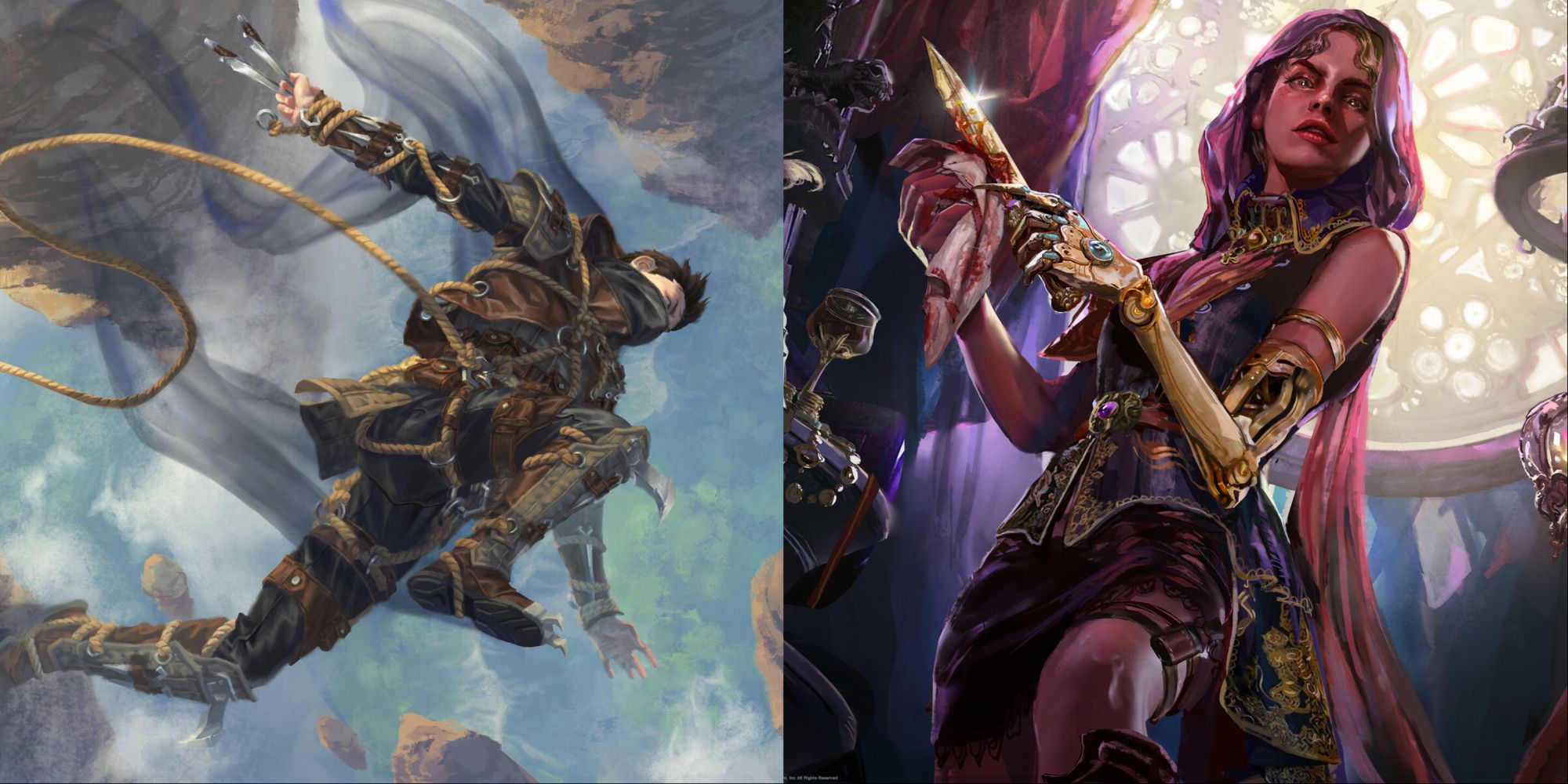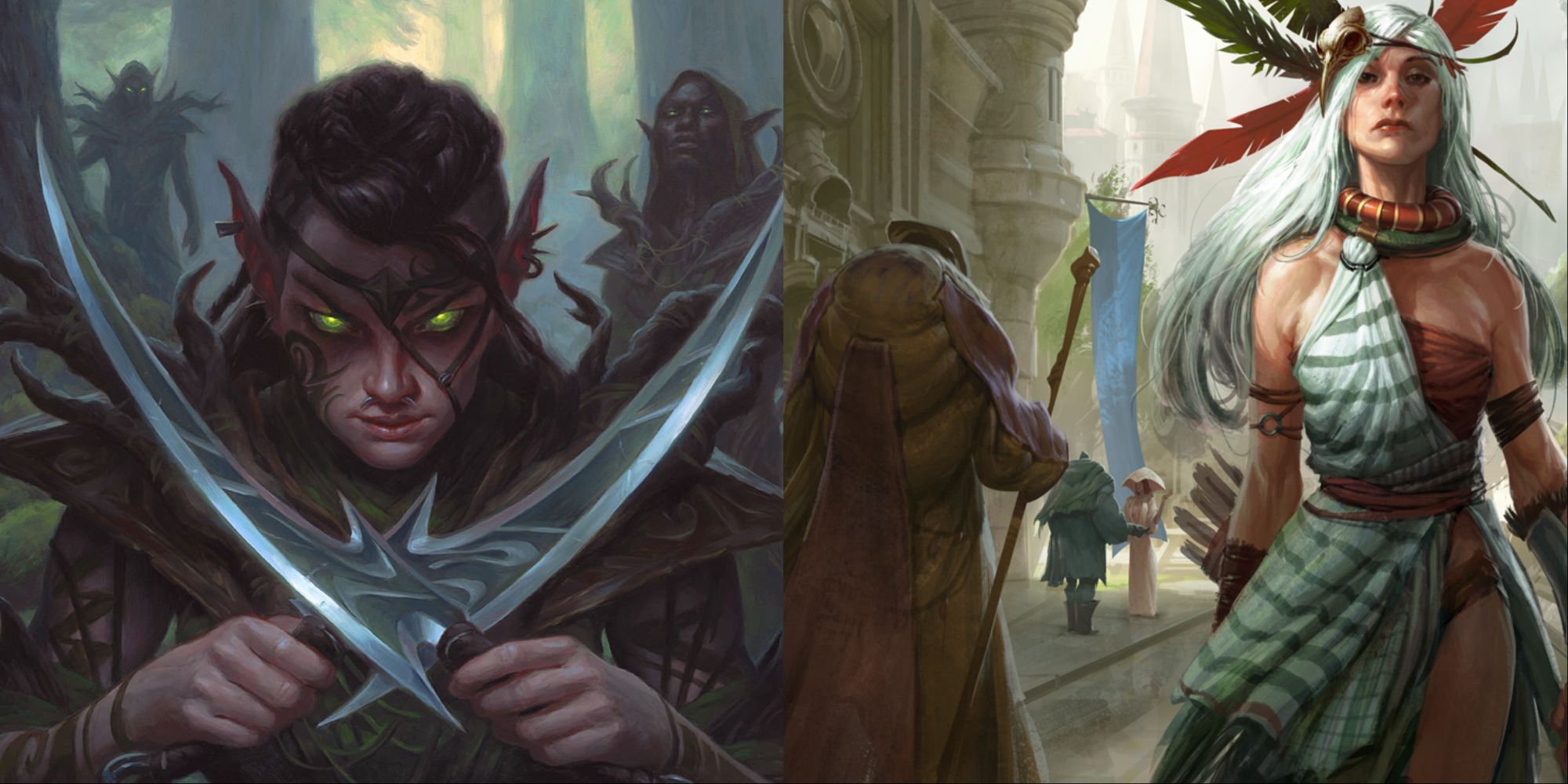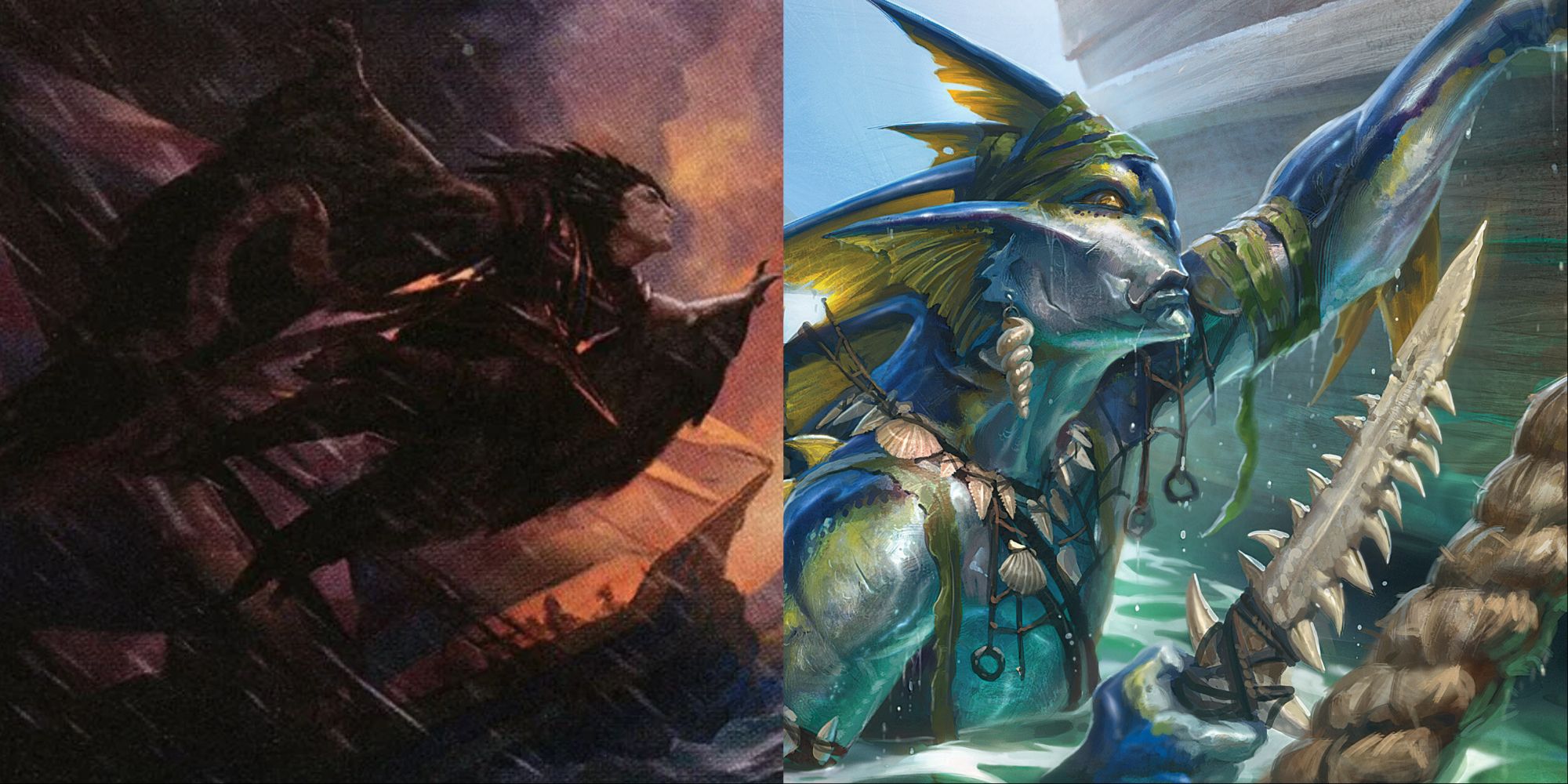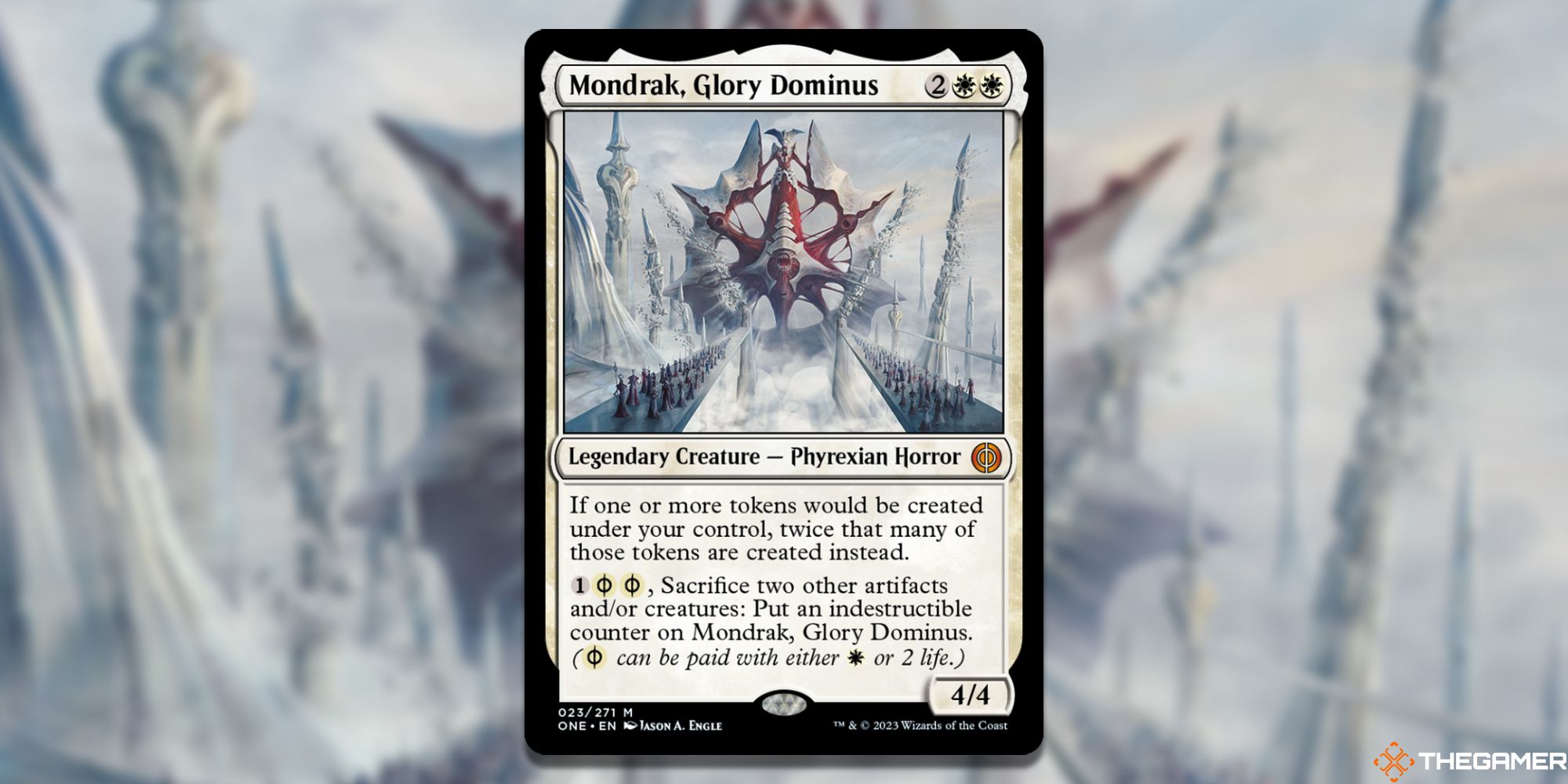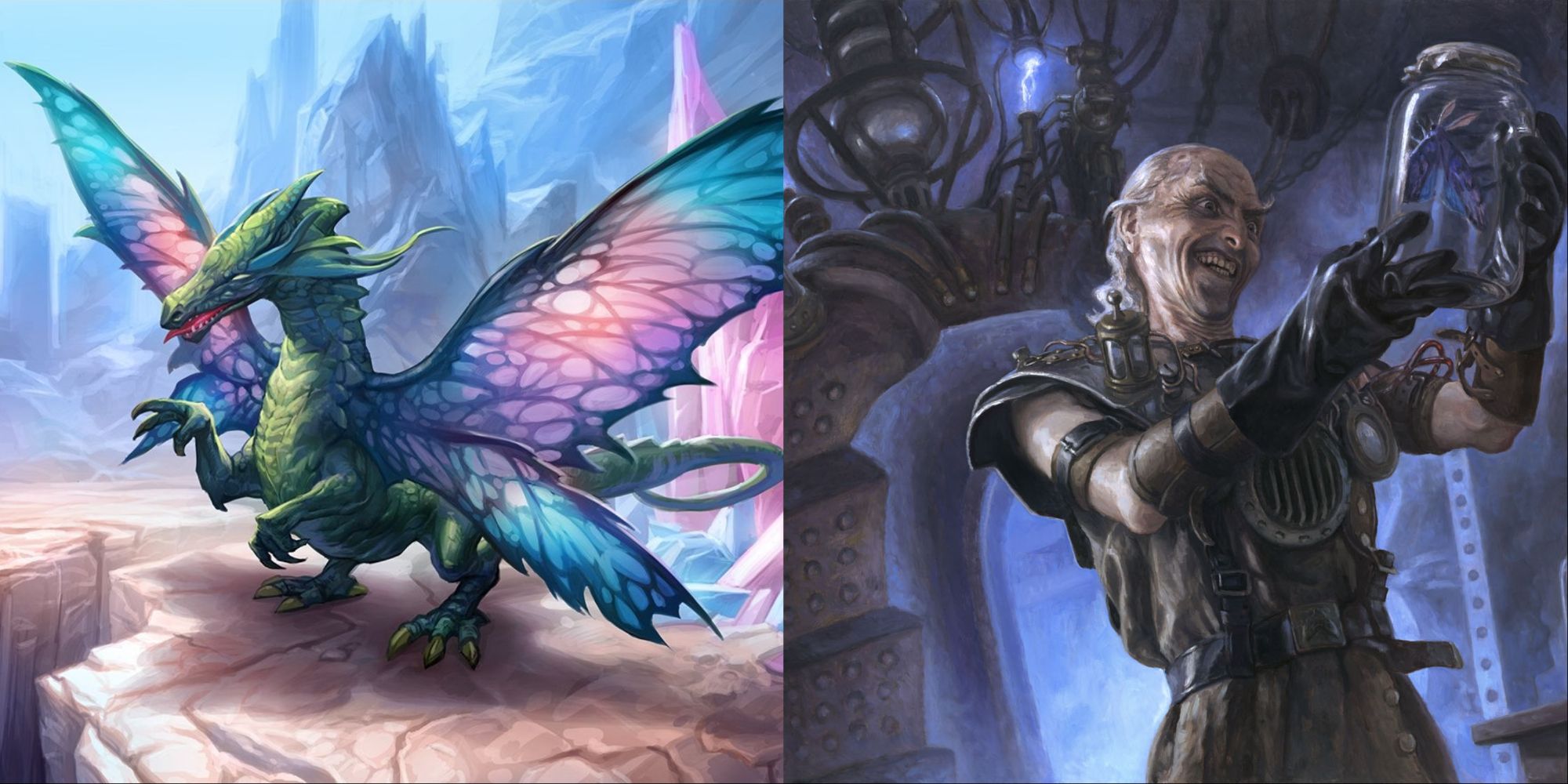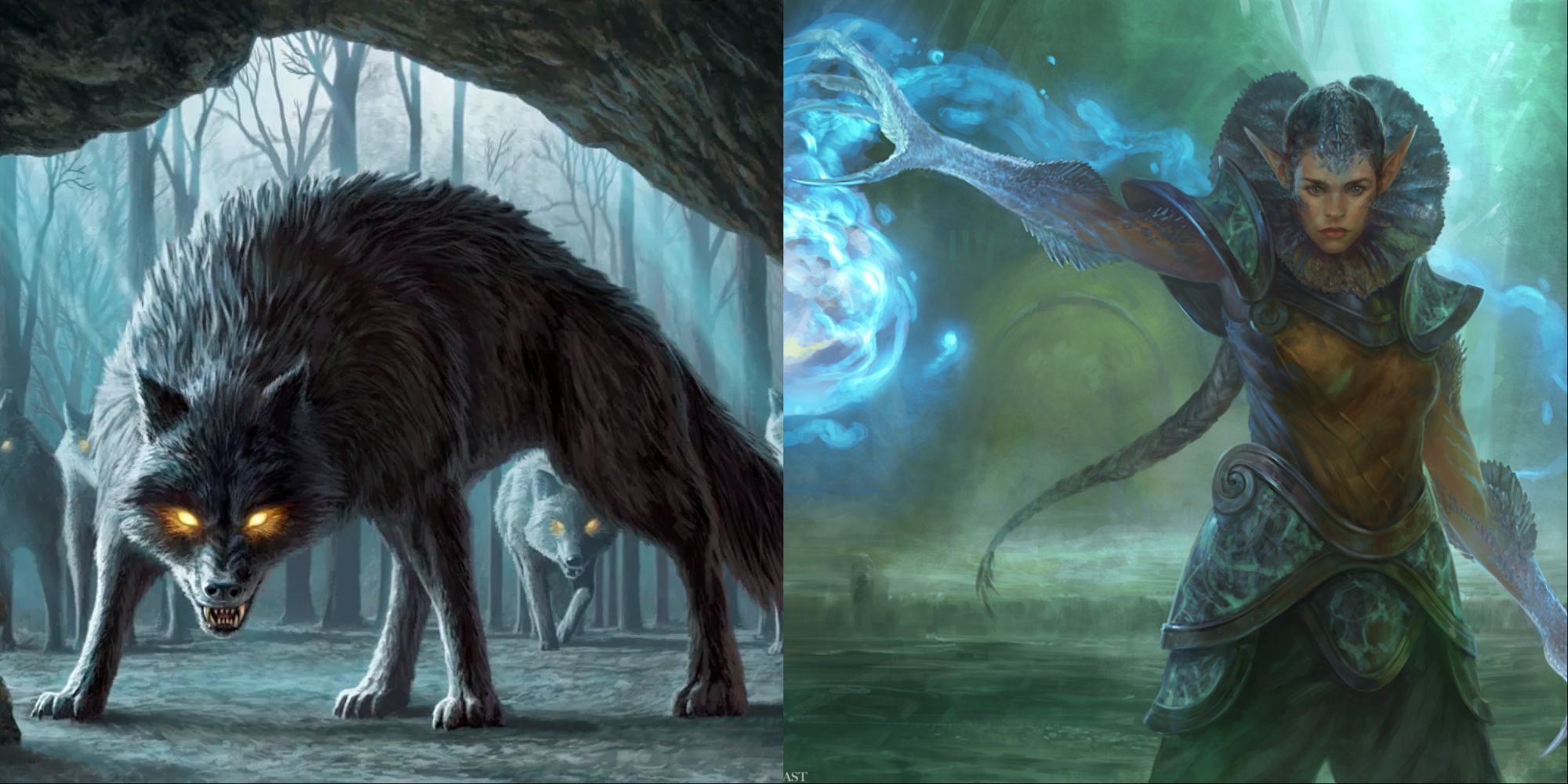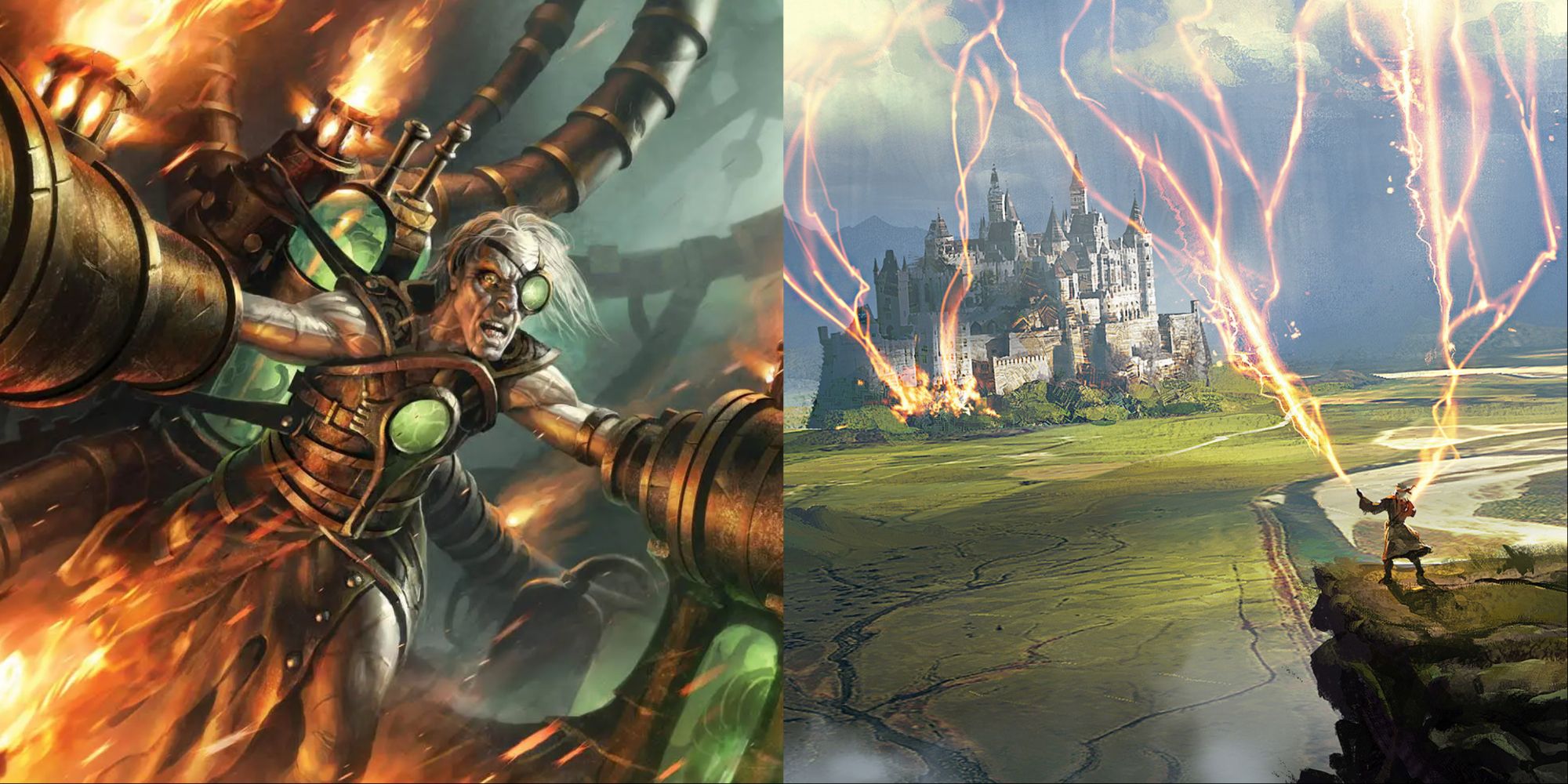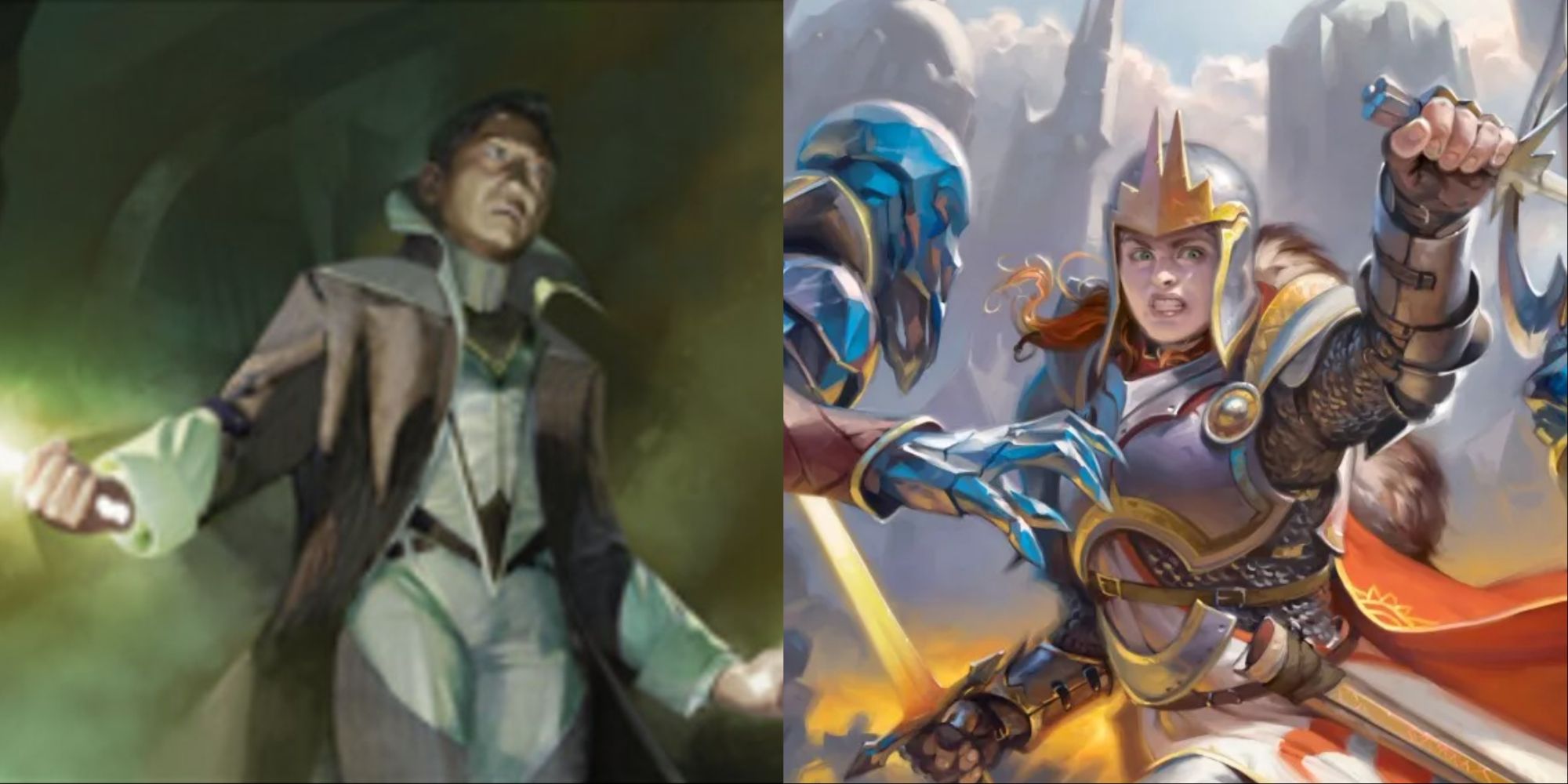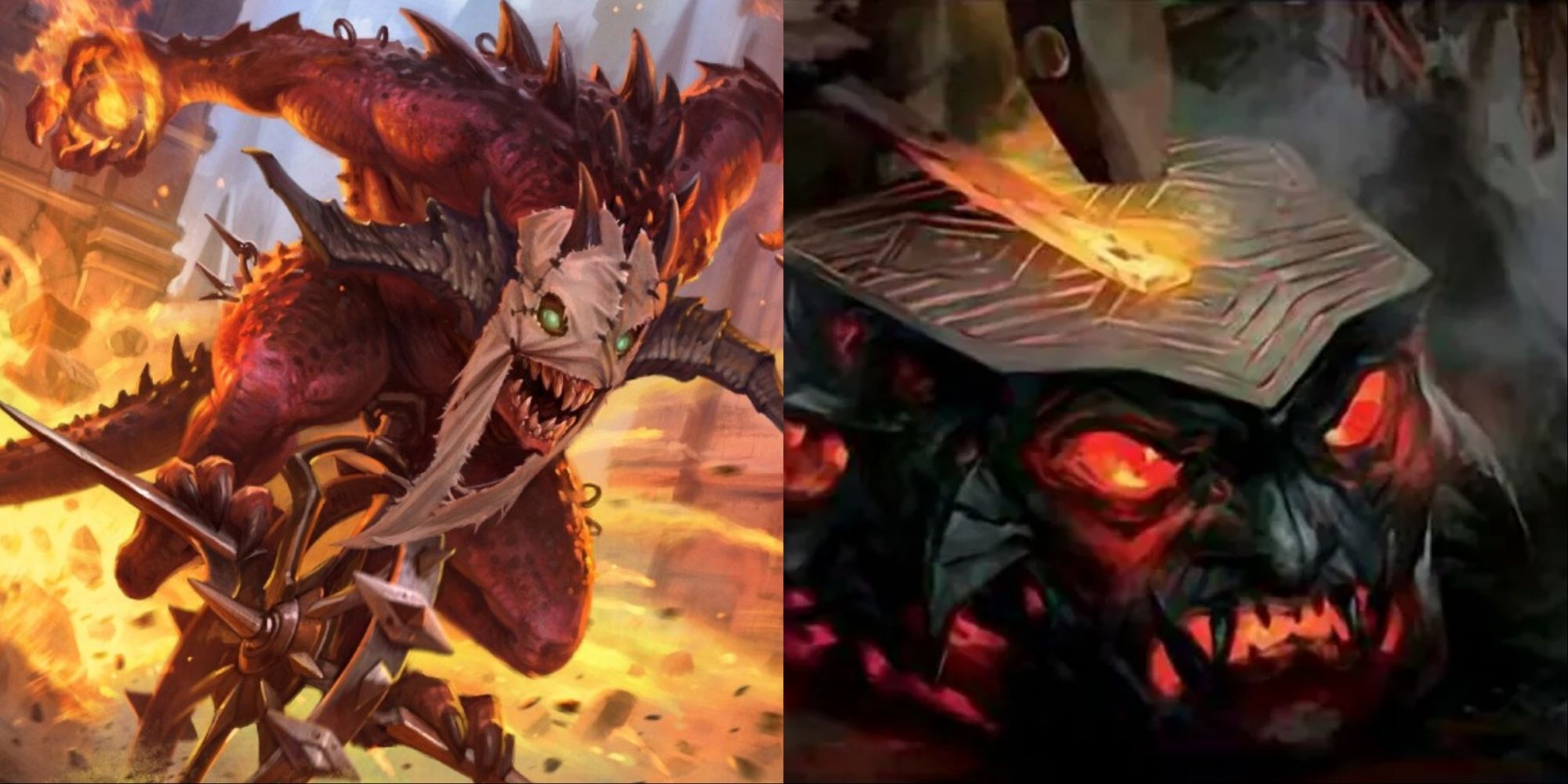Highlights
- Explorer is a non-rotating format in Magic: The Gathering: Arena that includes all non-digital cards released since Ixalan and any cards from Return to Ravnica onwards.
- Budget decks are a great way to get started in Explorer without using up rare and mythic wildcards, offering a variety of play styles that are easy to build and play.
- New cards have been released, expanding the deck options in Explorer. Decks like green/white Tokens, blue/red Transmogrify, and red/white Hammer Time are now viable and offer unique strategies to defeat opponents.
Explorer is Magic The Gathering: Arena's true-to-paper, non-rotating format. Any non-digital card released on Arena since the Ixalan set is legal, as well as any card that appeared in the game that was in Return To Ravnica onward. These are the sets included in the Pioneer format, which is what Explorer will eventually become.
As with every format, there are budget decks to play. These have a variety of play styles, all while being easy to build and play in Explorer. If you want to save most of your rare and mythic wildcards, budget decks are a nice way to dip your toes into a format without over-committing resources.
Updated September 25, 2023, by Ryan Hay: All sorts of new decks become viable the longer formats are around, and the same is true with Explorer. Since the last update, plenty of exciting new cards have been released, giving you more opportunities to jam unique cards and decks together to take down your opponents. This time around, we're adding green/white Tokens to take advantage of a wide battlefield, blue/red Transmogrify to cheat huge creatures into play, and red/white Hammer Time, to bring the hammer down on your opponents far too early in the game for them to deal with.
18 Izzet Pyromancer
Total: 24 Commons, 14 Uncommons
|
4 |
Fading Hope (U) |
4 |
Consider (C) |
|
4 |
Opt (C) |
2 |
Spikefield Hazard (U) |
|
4 |
Strangle (C) |
4 |
Make Disappear (C) |
|
4 |
Young Pyromancer (U) |
4 |
Third Path Iconoclast (U) |
|
4 |
Of One Mind (C) |
4 |
Fiery Impulse (C) |
|
10 |
Mountains |
12 |
Islands |
Izzet Pyromancer is a deck named after the card Young Pyromancer, a two-drop that creates a 1/1 token whenever you cast any instant or sorcery spell. The addition of Third Path Iconoclast made the deck even better, allowing you to essentially play eight copies of basically the same card, except Third Path Iconoclast creates a token for any non-creature spell.
The deck plays just these creatures and a ton of one-mana spells to constantly trigger the effects of your creatures to flood the battlefield with tokens. The effects of non-creature spells often act as draw power or removal, ensuring the battlefield is clear, and your hand is full.
Izzet Pyromancer is all about ensuring your token creators stick around. It's best to utilize Make Disappear as a way to counter any kind of interaction that could remove them.
In a pinch, you can even use Fading Hope to save them by returning them to your hand. Since they all have three or fewer mana values, you even get the scry effect along with it as an added bonus.
Though the removal suite is a bit low, the number of tokens you can make can counteract that, making chump blockers for your opponent's big creatures and swinging in for damage by overwhelming them with creatures they don't have enough resources to deal with.
17 Mono-Blue Mill
Total: 18 Commons, 24 Uncommons, 4 Rares
|
4 |
Fading Hope (U) |
4 |
Merfolk Secretkeeper (C) |
|
2 |
Merfolk Windrobber (U) |
4 |
Overwhelmed Apprentice (U) |
|
4 |
Ruin Crab (U) |
4 |
Drowned Secrets (R) |
|
4 |
Didn't Say Please (C) |
2 |
Teferi's Tutelage (U) |
|
4 |
Compelling Argument (C) |
4 |
Ashiok, Dream Render (U) |
|
4 |
Ipnu Rivulet (U) |
4 |
Evolving Wilds (C) |
|
14 |
Islands |
2 |
Mystic Sanctuary (C) |
Mono-Blue Mill is built around getting rid of your opponent's entire deck, winning the game by making your opponent lose by being unable to draw a card. The deck can be built with a minimal number of rares and easily upgraded later on.
The budget version is just as strong, taking advantage of cards like Ruin Crab and fetchlands to trigger its landfall ability multiple times a turn.
Since you are required to fully commit to the mill strategy, Mono-Blue Mill plays some interaction such as Fading Hope that can put the opponent back on mana by essentially undoing a summon but also allows you to reuse your mill cards like Merfolk Secretkeeper to let it go on an adventure again.
One of the things to keep in mind with Mill is that it requires proper resource management. It offers a very small amount of interaction, so it can fall behind on creature-based strategies.
As such, it is very important to use your Didn't Say Please counterspells with care, and only on large creatures and other threats, not small ones. It is a control-based strategy that slowly brings your opponent's deck to zero, so it is vital to make sure the battlefield is clear of threats so you don't have to worry about losing all your life while milling.
16 Ensoul Artifacts
Totals: 8 Commons, 32 Uncommons, 4 Rares
|
4 |
Ornithopter (U) |
4 |
Gingerbrute (C) |
|
4 |
Springleaf Drum (U) |
4 |
All That Glitters (U) |
|
4 |
Ingenious Smith (U) |
4 |
Michiko's Reign of Truth (U) |
|
4 |
Ensoul Artifact (U) |
4 |
Patchwork Automation (U) |
|
4 |
Stonecoil Serpent (R) |
4 |
Darksteel Citadel (U) |
|
4 |
Tranquil Cove (C) |
10 |
Plains |
|
6 |
Islands |
Ensoul Artifacts is a deck built around the enchantment Ensoul Artifact, an aura that makes any artifact into an artifact creature with a 5/5 stat line. This can be done on any artifact and can turn a low-attack, easy-to-cast artifact into a massive threat.
Nearly the entire deck is made up of artifact creatures, many of which cost zero to two mana, allowing you to boost almost all of them up.
One of the stars is Darksteel Citadel, which is an indestructible artifact land to give you a 5/5 creature with indestructible as early as turn two. The deck is very aggressive and can go from harmless artifacts to giant creatures in just one turn.
You often want to buff your Ornithopter or Gingerbrute since those are the creatures that can often evade blockers due to flying or being able to make them unblockable respectively. With how many extra stats Michiko's Reign Of Truth tends to give, you can win games with the first four turns.
Ingenious Smith helps you to dig into more artifacts, and if you want some added removal, the option to play Portable Hole instead of Stonecoil Serpent is there as well if you want to run a build with no rares at all.
15 Mono-Red Aggro
Total: 16 Commons, 24 Uncommons, 4 Rares
|
4 |
Eidon Of Great Revel (R) |
4 |
Fanatical Firebrand (C) |
|
4 |
Goblin Javelineer (C) |
4 |
Kumano Faces Kakkazan (U) |
|
4 |
Monastery Swiftspear (U) |
4 |
Phoenix Chick (U) |
|
4 |
Play With Fire (U) |
4 |
Lightning Strike (C) |
|
4 |
Light Up The Stage (U) |
4 |
Skewer The Critics (C) |
|
16 |
Mountains |
4 |
Ramunap Ruins (U) |
Mono-Red Aggro is a deck built around winning the game as fast as possible with low-cost creatures, often with haste. Nearly the entire pool of creatures have haste, with the exception of Eidon Of Great Revel, which instead acts as a way to deal extra burn damage to get closer to winning the game.
It runs a mixture of fast creatures to outspeed your opponents and burn spells to help close out games once your opponent starts getting creatures onto the battlefield as blockers. Aggro decks can often snowball to the point the game can't be won, making them win the games they win quickly.
Mono Red is all about winning the game before your opponent can answer your board state. As such, the burn spells you play are often used to destroy whatever low-drop creatures your opponent may play so that you have a clear line to attack your opponent's life directly.
If there are no creatures to deal with, the burn spells can be pointed to your opponent directly instead, allowing you to quickly close out games, especially thanks to being backed up by prowess triggers from Monastery Swiftspear.
Eidon Of Great Revel can turn almost every relevant removal spell into a two-damage burn. So even if you lose your creature, it still gets to deal damage on the way out.
14 Boros Hammer Time
Total: 18 Commons, 30 Uncommons, 8 Rares
|
4 |
Fireblade Charger (U) |
4 |
Resolute Strike (C) |
|
4 |
Cacophony Scamp (U) |
4 |
Kazuul's Fury (U) |
|
4 |
Sram, Senior Edificer (R) |
2 |
Thud (U) |
|
4 |
Kemba, Kha Enduring (R) |
4 |
Colossus Hammer (U) |
|
4 |
Bruenor Battlehammer (U) |
2 |
Forging the Tyrite Sword (U) |
|
4 |
Lorehold Campus (U) |
2 |
Axgard Armory (U) |
|
9 |
Plains |
9 |
Mountain |
Easily the funniest deck on this list is white/red Boros Hammer Time. The entire crux of the deck is to take Colossus Hammer, a one-drop equipment that gives the attached creature a staggering +10/+10 and forces them to lose flying and hit your opponent with it until they lose.
As a backup plan, you have cards like Kazuul's Fury and Thud to throw your creature at your opponent, dealing damage to them equal to the sacrificed creature's power. With a little planning, you can hit an opponent with an equipped creature and then sacrifice it to K.O. an opponent in a single turn.
13 Self-Mill
Total: 18 Commons, 18 Uncommons, 4 Rares
|
4 |
Merfolk Secretkeeper (C) |
4 |
Otherworldly Gaze (C) |
|
4 |
Compelling Argument (C) |
4 |
Frantic Inventory (C) |
|
4 |
Wall Of Lost Thoughts (U) |
2 |
Aid The Fallen (C) |
|
2 |
Go For The Throat (U) |
4 |
Ashiok, Dream Render (U) |
|
4 |
Jace, Wielder Of Mysteries (R) |
4 |
Creeping Chill (U) |
|
4 |
Ipnu Rivulet (U) |
14 |
Islands |
|
6 |
Swamps |
Self-Mill is catered to mill out your deck as quickly as possible. While you normally lose the game when trying to draw with no cards in your library, Jace, Wielder Of Mysteries instead lets you win the game.
The deck plays a ton of ways to mill yourself, such as Otherworldly Gaze, which allows you to mill yourself for six cards for a total of six mana.
The creatures all allow you to mill yourself since they can target any player with the mill effects. Since your deck needs Jace to win, Aid The Fallen allows you to bring it back from the graveyard if you accidentally mill all your copies of it.
The deck does not have many ways to interact with the opponent, so focusing on self-milling yourself is very important. You want to utilize all of your mana each of your turns and generally want to tap out to do so.
While Go For The Throat can answer a few problems, there are not many other ones. As such, you should be focusing on casting your self-mill cards as soon as you can.
Ashiok, Dream Render can help you to stall your opponent as well, since it prevents them from being able to search their libraries.
12 Azorius Auras
Total: 8 Commons, 27 Uncommons, 4 Rares
|
4 |
Adanto Vanguard (U) |
4 |
Arcane Flight (C) |
|
4 |
Selfless Savior (U) |
1 |
Aether Tunnel (U) |
|
4 |
Sram, Senior Edificer (R) |
2 |
All That Glitters (U) |
|
4 |
Stormchaser Drake (U) |
4 |
Ethereal Armor (U) |
|
4 |
Curious Obsession (U) |
4 |
Sentinel's Eyes (C) |
|
4 |
Staggering Insight (U) |
10 |
Islands |
|
11 |
Plains |
Azorius (blue/white) Auras is a cheap deck to make, only requiring four rares to make a budget version. If you like it, you can upgrade the deck with a few other rares and even bring it into Historic for an equally viable deck.
Azorius Auras is focused around Sram, Senior Edificer, which will draw you a card whenever you cast an aura. This lets you continue to refresh your hand with more auras, allowing you to get aggressive very early.
You can run a lower number of lands, as none of your cards cost more than two mana, and you will be able to easily dig through your library thanks to drawing triggers.
The deck can be prone to removal, which Adanto Vanguard helps to circumvent. If your opponent does not have removal, it allows you to run wild with the game, loading up auras onto all of your creatures.
The best targets for the auras are Adanto Vanguard as it can save itself, as well as Stormchaser Drake since targeting it with an aura will trigger its effect that lets you draw a card. If Sram, Senior Edificer is on the battlefield as well, this gives you two cards back into your hand for the price of one.
11 Boros Cycling
Total: 14 Commons, 24 Uncommons
|
4 |
Flourishing Fox (U) |
4 |
Go For Blood (C) |
|
4 |
Flameblade Adept (U) |
4 |
Zenith Flare (U) |
|
4 |
Drannith Healer (C) |
4 |
Cast Out (U) |
|
4 |
Valiant Rescuer (U) |
4 |
Footfall Crater (U) |
|
4 |
Drannith Stinger (C) |
11 |
Plains |
|
2 |
Imposing Vantasaur (C) |
11 |
Mountains |
Boros (red/white) Cycling is a very easy-to-build deck, not requiring any rares or mythics to build. The deck is built around cards with the cycling ability, which lets you pay one mana to discard them and draw a card.
Boros Cycling runs cards with abilities that trigger when you cycle a card, either growing their stats, burning the opponent, or making tokens. They also have a strong finisher in Zenith Flare, which can do enough damage to win the game on its own if you have enough cards with cycling in the graveyard.
Since cycling can be done at instant speed, it allows you to hold up mana until you know you do not need it anymore during your opponent's end step. This lets you use Cast Out or Go For Blood if needed, and if not, you can cycle them away to load up your graveyard for Zenith Flare.
Zenith Flare is the best card in the deck, acting as a game-ender and a way to keep you in the game as it lets you gain life. As such, even though Zenith Flare might not burn for lethal damage, it can still be good to cast to gain a lot of life to stay in the game.
Since you play four copies of it, it's not too uncommon to see another one finish the job, especially since almost your entire deck can discard to draw a card.
10 Temur Transmogrify
Total: 24 Commons, 8 Uncommons, 4 Rares, 2 Mythic Rare
|
2 |
Atraxa, Grand Unifier (MR) |
4 |
Transmogrify (R) |
|
4 |
Careful Cultivation (C) |
4 |
Courier's Briefcase (U) |
|
4 |
Make Disappear (C) |
4 |
Flip the Switch (C) |
|
4 |
Fire Prophecy (U) |
4 |
Fiery Impulse (C) |
|
4 |
Volcanic Spite (C) |
4 |
Swiftwater Cliffs (C) |
|
4 |
Game Trail (U) |
5 |
Island |
|
5 |
Mountain |
5 |
Forest |
One of the more interesting decks on this list is the blue, red, and green Temur Transmogrify deck. The deck is very straightforward: dig through your deck until you find Transmogrify, and then cast it on your own creature. Transmogrify exiles that creature, and then lets you reveal cards from the top of your library until you find another creature and put it into play.
The only creature in your deck is Atraxa, Grand Unifier, a massive 7/7 creature with lifelink, flying, deathtouch, and vigilance, making it a game-changing card to drop. While you don't run any other creatures, you have a few ways to generate creature tokens to exile, like Careful Cultivation and Courier's Briefcase, which both also act as ramp to cast Transmogrify as early as possible
9 Dimir Rogues
Total: 2 Commons, 30 Uncommons, 4 Rares
|
4 |
Merfolk Windrobber (U) |
4 |
Drown In The Loch (U) |
|
4 |
Ruin Crab (U) |
4 |
Fatal Push (U) |
|
4 |
Soaring Thought-Thief (U) |
2 |
Heartless Act (U) |
|
4 |
Thieves' Guild Enforcer (R) |
4 |
Into The Story (U) |
|
12 |
Islands |
2 |
Of One Mind (C) |
|
12 |
Swamps |
4 |
Saw It Coming (U) |
A long-time threat for as long as it was legal in Standard, Dimir (blue/black) Rogues is a solid budget deck for Explorer. It only requires one playset of rares to craft in Thieves Guild Enforcer, but the rest of the deck can be made with commons and uncommons.
Rogues are a control deck, built around chipping away at the opponent's life with flyers and deathtouchers. It also has a secondary win condition in Mill, as many of the Rogues have effects that cause milling, made even easier thanks to Ruin Crab and fetchlands.
Rogues often play at instant speed, as most of their spells are instant or have flash. Since it plays a fair bit of counterspells, this allows you to keep your mana up to respond to your opponent's spells, and when it's all clear in the end phase, flash in your Rogues.
It's important to go slow with Rogues, as they are a control mixed with a mill deck. You don't want to use much mana on your turn, saving it to cast during your opponent's instead.
8 Gruul Aggro
Total: 8 Commons, 24 Uncommons, 4 Rares
|
4 |
Llanowar Elves (C) |
4 |
Domri's Ambush (U) |
|
4 |
Burning-Tree Emissary (U) |
4 |
Kumano faces Kakkazan (U) |
|
4 |
Zhur-Taa Goblin (U) |
4 |
Voltaic Brawler (U) |
|
4 |
Ahn-Crop Crasher (U) |
4 |
Lovestruck Beast (R) |
|
4 |
Elvish Mystic (C) |
12 |
Mountains |
|
12 |
Forests |
Gruul (red/green) Aggro is a deck that's built around playing as many creatures as quickly as possible, flooding the field to defeat the opponent before they have a chance to set up. This is largely done by playing low-mana creatures, many of which have haste so they can attack right away.
Gruul Aggro can easily be upgraded with more rares, but a budget version works just as well. Since aggro decks want to win so fast, the amount of mana needed is usually low to cast creatures, allowing you to easily flood the field.
The deck wants you to flood the battlefield with creatures. With the help of Llanowar Elves and Elvish Mystic one turn one, it lets you play your three mana and up creatures a turn early and gives you one extra mana to work with.
This allows you to play a ton of your spells to make sure you can get them onto the battlefield before your opponent has an answer to them. Afterward, it's all about dealing combat damage before your opponent can stabilize.
Most of the creatures in the deck can get haste, allowing them to start dealing damage as soon as they hit the battlefield.
7 Mono Blue Tempo
Total: 12 Commons, 28 Uncommons
|
4 |
Pteramander (U) |
4 |
Spell Pierce (C) |
|
4 |
Siren Stormtamer (U) |
4 |
Essence Capture (U) |
|
4 |
Spectral Sailor (U) |
4 |
Lofty Denial (C) |
|
4 |
Brineborn Cutthroat (U) |
4 |
Make Disappear (C) |
|
4 |
Curious Obsession (U) |
4 |
Lookout's Dispersal (U) |
|
20 |
Islands |
Mono Blue Tempo is a deck built around playing low-mana creatures that will sit on the field and slowly chip away at the opponent, generally in the air as most have flying. Many have flash as well, allowing you to hold up mana for the opponent's turn.
This is especially important since the Tempo in Mono Blue Tempo comes from the number of counterspells you play. Mono Blue Tempo negates your opponent's big spells while attacking the opponent, keeping them out of the game.
Thanks to Curious Obsession, you can keep drawing cards to refill your hand for more counterspells.
You almost never want to cast any spell on your turn, especially once Brineborn Cutthroat hits the battlefield since it gains +1/+1 counters each time you cast a spell on your opponent's turn. Since half of your deck is counterspells, you can shut down most answers your opponent throws your way.
Most of your creatures only cast one mana sans Brineborn Cutththroat, making it easy to get creatures onto the battlefield while keeping your mana up for counterspells. It's important to get Curious Obsession onto a creature early, as it's your main way to draw cards to make sure you have a hand loaded up on counterspells.
6 Selesnya Tokens
Total: 6 Commons, 16 Uncommons, 8 Rares, 2 Mythic Rares
|
2 |
Elvish Mystic (C) |
4 |
Conclave Tribunal (U) |
|
4 |
Llanowar Elves (C) |
4 |
Wedding Announcement (R) |
|
4 |
Pollen-Shield Hare (R) |
4 |
Invasion of Belenon (U) |
|
4 |
Join the Dance (U) |
4 |
Queen Allenal of Ruadach (U) |
|
4 |
Prosperous Innkeeper (U) |
2 |
Mondrak, Glory Dominus (MR) |
|
9 |
Plains |
9 |
Forests |
|
2 |
Memorial to Glory |
4 |
Fortified Village |
Overwhelming the battlefield with tons of little creatures that quickly grow to become larger and more terrifying is almost always a great way to win a game. With a green and white Selesnya Token list, you get to fill up the battlefield with Human and Vampire Tokens and then fling them time and time again in this aggro list.
There are some concessions made here to keep the deck lower in rare and mythic rare wildcards, but even so, you have plenty of power to take games. Running both Pollen-Shield Hare and Wedding Announcement helps give your creatures a boost in power, while Invasion of Belenon also fills a similar role by producing tokens and then pumping your board.
If you have the spare mythic rare wildcards, Mondrak, Glory Dominus doubles all the tokens you'd produce while eventually becoming an indestructible machine that your opponents have to exile if they want to get rid of.
5 Izzet Spells
Total: 12 Commons, 28 Uncommons
|
4 |
Delver Of Secrets (U) |
4 |
Consider (C) |
|
4 |
Ghitu Lavarunner (C) |
4 |
Play With Fire (U) |
|
4 |
Khenra Spellspear / Gitaxian Spellstalker (U) |
4 |
Strangle (C) |
|
4 |
Sprite Dragon (U) |
4 |
Wizard's Lightning (U) |
|
2 |
Spikefield Hazard (U) |
4 |
Lightning Strike (U) |
|
2 |
Balmor, Battlemage Captain (U) |
11 |
Mountains |
|
9 |
Islands |
Izzet (red/blue) Spells is a deck that is heavily focused on instant and sorcery spells. The creatures in the deck all benefit from this, growing into stronger creatures whenever you cast one of these spells. Most of its key creatures have flying as well, allowing for damage in the air to be easily dealt.
Izzet has access to a ton of powerful, low-cost spells, allowing for Izzet Spells to be a formidable deck. Not only that, but it doesn't require any rares or mythics to build a viable version of it.
Izzet Spells wants you to be casting multiple spells on each turn. Most of the creatures have prowess, if not gaining +1/+1 counters from casting spells to permanently grow larger.
Balmor, Battlemage Captain helps to ensure you can deal damage, as it will give all your creatures a +1/+0 stat boost as well as trample. When this is mixed with all the prowess triggers, this can make them into giant threats that get around blockers thanks to the trample being granted.
You want to be setting your battlefield up with your creatures before switching to spell-slinging mode to gain full advantage of all their effects.
4 Simic Flash
Total: 8 Commons, 24 Uncommons, 4 Rares
|
4 |
Brineborn Cutthroat (U) |
4 |
Fading Hope (U) |
|
4 |
Frilled Mystic (U) |
4 |
Make Disappear (C) |
|
4 |
Nightpack Ambusher (R) |
4 |
Growth Spiral (C) |
|
4 |
Jwari Disruption (U) |
4 |
Saw It Coming (U) |
|
12 |
Forest |
4 |
Rewind (U) |
|
12 |
Island |
A simple control deck, Simic (green/blue) Flash is a deck built around only playing during your opponent's turn. This is done by utilizing creatures with flash and counterspells, and most of its creatures have effects based on not casting spells on your turn or casting them during your opponent's.
Simic Flash is mostly counterspells with payoff creatures, allowing you to keep up with other decks while countering all of their major spells. Thanks to Nightpack Ambusher, it's easy to flood the field with creatures despite running so few in the main deck.
Since every creature spell in your deck has flash, you can always hold your mana up for counterspells and flash in creatures once the coast is clear and you no longer have to keep mana up for answers. Once Nighpack Ambusher is on the battlefield, you generally want to avoid playing anything on your turn, as if you don't you get rewarded with a 2/2 wolf token that gets boosted by Nightpack Ambusher.
Since it isn't a legendary creature, you can play multiple copies of Nightpack Ambusher to gain even more value as well as boost the other copies of it.
3 Mono Red Burn
Total: 12 Commons, 26 Uncommons, 4 Rares
|
4 |
Ghitu Lavarunner (C) |
4 |
Play With Fire (U) |
|
4 |
Thermo-Alchemist (C) |
4 |
Stoke The Flames (U) |
|
4 |
Eidolon of the Great Revel (R) |
4 |
Lightning Strike (U) |
|
4 |
Kumano Faces Kakkazan (U) |
4 |
Light Up The Stage (U) |
|
2 |
Spikefield Hazard (U) |
4 |
Skewer The Critics (C) |
|
18 |
Mountains |
4 |
Wizard's Lightning (U) |
Mono Red Burn is a staple of almost every format, and Explorer is no exception since with how many burn cards are available, it's very easy to build a budget version of the deck. Mono Red Burn is built around dealing damage directly to the opponent, generally ignoring the creatures on the board.
Many of the burn spells available in Explorer can double as removal a lot of the time, allowing them to be more versatile than other red spells. Mono Red Burn continues to get support, all while being powerful without needing to drop any rare or mythic wildcards.
While burn at its core is about doing damage directly to the opponent while ignoring creatures, that isn't always to case. Sometimes it's better to use your burn spells on a creature as removal if they are helping your opponent stabilize.
It's rather easy to chain burn spells together to take care of a problem creature such as a Sheoldred, the Apocalypse since it basically shuts down your deck if it sticks around. If none of these are on the battlefield, however, the burn spells go directly to the opponent.
With the addition of Stoke The Flames from March Of The Machine, it offers a game-ender once the battlefield stalls out, using your creatures to cast the spell for free thanks to convoke.
2 Boros Blitz
Total: 12 Commons, 28 Uncommons
|
4 |
Clever Lumimancer (U) |
4 |
Defiant Strike (C) |
|
4 |
Adanto Vanguard (U) |
4 |
Gods Willing (U) |
|
4 |
Illuminator Virtuoso (U) |
4 |
Homestead Courage (C) |
|
4 |
Tenth District Legionnaire (U) |
4 |
Reckless Rage (U) |
|
4 |
Ancestral Anger (C) |
4 |
Invigorated Rampage (U) |
|
9 |
Mountains |
11 |
Plains |
Boros Blitz (not to be confused with the Blitz ability) is a deck built around casting spells that target creatures you control to make them bigger. Generally, you won't be playing any card that costs more than two mana, allowing you to cut down on lands in favor of more spells.
Boros Blitz has plenty of fantastic creatures with these kinds of effects, and a budget build is nearly as good as one that uses higher rarities. Thanks to cards like Tenth District Legionnaire and Illuminator Virtuoso, you can control your top deck and get rid of cards that you don't want or need in your hand.
The deck generally wants you to be focusing on just one creature, as they gain boosts when they're targeted by card effects. While this can make them prone to removal, Gods Willing helps to keep them safe while triggering their effects to grow even more.
The deck is very aggressive, and you generally want to be swinging in for damage each turn. It's not uncommon for Boros Blitz decks to win the game in the first few turns, so using pump spells when nothing is blocked is vital, as it's how you tend to close out games.
Alternatively, you can use Gods Willing to give protection to a creature to prevent it from being able to be blocked to ensure you hit in for damage.
1 Rakdos Sacrifice
Total: 14 Commons, 22 Uncommons
|
4 |
Cauldron Familiar (U) |
4 |
Fatal Push (U) |
|
4 |
Voldaren Epicure (C) |
2 |
Voltage Surge (C) |
|
2 |
Bloodtithe Harvester (U) |
4 |
Deadly Dispute (C) |
|
4 |
Mayhem Devil (U) |
4 |
Experimental Synthesizer (C) |
|
4 |
Witch's Oven (U) |
4 |
Oni-Cult Anvil (U) |
|
12 |
Mountains |
12 |
Swamps |
Rakdos (black/red) Sacrifice decks are built around sacrificing your creatures to build value. The most common way is utilizing Cauldron Familiar and Witch's Oven to continuously burn the opponent's life.
When combined with cards like Mayhem Devil, the damage gets even greater. Oni-Cult Anvil provides another slow burn win condition as it can burn and provide tokens.
There are many ways to trigger sacrifice effects with both spells and permanents, making for a formidable deck that can be built without a single rare or mythic. Rakdos Sacrifice isn't just a budget deck; it's a meta deck.
The deck is a slow, grindy deck. It slowly stabilizes life while dwindling down your opponent's own life total. Thanks to Oni-Cult Anvil and Witch's Oven, it makes chump blocking free while allowing you to replace the cards you'd lose in that combat right away with their respective effects.
This makes it easy to turn on Fatal Push's revolt since you can just use one of those artifacts' effects to make a permanent leave your battlefield. Mayhem Devil helps to make the process go quicker, since on each sacrifice of a permanent, it can deal one damage.
This turns the Cauldron Familiar and Witch's Oven combo to deal much more damage than it would on its own.

